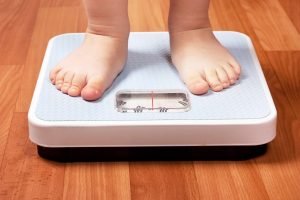Summary
Sleep issues should never be ignored, as even something as simple as snoring could be a sign of a serious condition like sleep apnea. Sleep apnea is a common sleep disorder that affects many people globally, including Filipinos, with estimates suggesting that 4 out of 100 men and 2 out of 100 women may experience it. The hallmark symptom of sleep apnea is loud snoring combined with repeated pauses in breathing during sleep. These pauses disrupt the body’s oxygen supply and classify sleep apnea as a respiratory disorder.
Sleep apnea typically occurs when the upper airway is obstructed, often due to factors such as obesity, enlarged tonsils, or other conditions that block the airway during sleep. These obstructions cause intermittent breathing pauses, which can lead to serious health issues if left untreated. The most concerning aspect of sleep apnea is that individuals often remain unaware of their condition, especially if no one is observing their sleep. The frequent pauses in breathing reduce oxygen supply to vital organs, which, over time, can be life-threatening.
While sleep apnea is dangerous, it is treatable with various methods, including medication, therapy, the use of oral appliances, and, in some cases, surgery. Understanding the symptoms, treatments, and causes of sleep apnea can help individuals recognize and address this condition before it leads to severe complications.
Table of Contents
Symptoms of Sleep Apnea

While loud snoring is a primary symptom, other signs may indicate this condition, including the following:
- Loud snoring with breathing pauses. The term “apnea” comes from the Greek word meaning “without breath.” Loud snoring alone does not necessarily mean sleep apnea; it must also include repeated breathing interruptions for it to be considered this condition.
- Gasping or choking for air. People with sleep apnea may wake up suddenly, gasping or choking, as their body struggles to get enough oxygen. This reflex is a response to the airway blockage that occurs during sleep.
- Sore and dry throat upon waking. Due to the difficulty breathing through the nose, those with sleep apnea often sleep with their mouths open to improve airflow. This can lead to a dry, sore throat in the morning.
- Insomnia or restless sleep. Sleep apnea frequently disrupts sleep, causing individuals to wake up multiple times during the night. This can lead to insomnia, as their sleep is repeatedly interrupted by breathing issues.
- Fatigue and excessive daytime sleepiness. For optimal energy levels, adults typically need 7 to 9 hours of sleep. People with sleep apnea often fall short of this, as repeated awakenings prevent them from achieving restorative sleep. This leads to chronic fatigue and frequent drowsiness during the day.
- Morning headaches and memory issues. In sleep apnea, the brain receives insufficient oxygen throughout the night, often resulting in morning headaches. Oxygen deprivation can also impact cognitive function, leading to memory issues and forgetfulness.
Recognizing these symptoms is crucial for identifying sleep apnea early. If you or a loved one experiences several of these symptoms, seeking medical advice can lead to diagnosis and treatment, improving sleep quality and reducing health risks associated with untreated sleep apnea.
Types of Sleep Apnea
Sleep apnea is classified into three types, each with unique causes and characteristics:
- Obstructive Sleep Apnea (OSA). “Obstructive” refers to a blockage in the airway. In OSA, the upper airway becomes partially or fully blocked during sleep. This happens when the throat muscles or tongue relax too much, causing the throat to “thicken” or the tongue to “recede,” obstructing airflow. People with OSA experience repeated pauses in breathing due to this obstruction. Although OSA is more common in individuals who are overweight, it can affect people of all body types.
- Central Sleep Apnea (CSA). In CSA, breathing pauses occur not because of a physical blockage but due to a disruption in the brain’s ability to send signals for breathing. The “central” in Central Sleep Apnea refers to the brain’s central control over breathing. CSA often occurs when the brain temporarily fails to communicate with the respiratory muscles, resulting in breathing interruptions. This type of sleep apnea is frequently associated with other conditions, such as heart disease or neurological disorders like stroke.
- Complex Sleep Apnea Syndrome. Also known as “treatment-emergent central sleep apnea,” this type combines the characteristics of both OSA and CSA. With complex sleep apnea, there is not only a physical obstruction in the airway but also a failure of the brain to signal the body to breathe. This type is particularly challenging to treat, as it involves both physical and neurological aspects of sleep apnea.
Understanding these types of sleep apnea is essential for accurate diagnosis and effective treatment, as each type requires specific management approaches. Recognizing the type of sleep apnea can help individuals address the condition more successfully and reduce health risks associated with untreated sleep apnea.
Diagnostic Procedures for Sleep Apnea
Diagnosing sleep apnea involves a variety of tests to monitor sleep patterns, breathing, and oxygen levels to confirm the presence and type of sleep apnea. Here are the primary diagnostic procedures:
- Polysomnography (PSG) or sleep study. Polysomnography is the most comprehensive test for diagnosing sleep apnea. Conducted overnight in a sleep clinic or hospital, PSG monitors brain activity, eye movement, heart rate, blood oxygen levels, and breathing patterns to detect sleep apnea episodes and assess their severity.
- Home sleep apnea test (HSAT). This portable test allows patients to monitor their sleep at home. HSAT devices measure airflow, breathing effort, blood oxygen levels, and other indicators, making it a convenient alternative to in-lab testing, though it may not capture all aspects of sleep disturbances as fully as PSG.
- Oximetry. This overnight test uses a pulse oximeter, typically clipped onto a finger, to measure blood oxygen levels during sleep. Frequent drops in oxygen levels may indicate sleep apnea, although this test alone cannot confirm the diagnosis without further testing.
- Electrocardiogram (ECG) and echocardiogram. In some cases, heart tests like ECG or echocardiogram may be used to monitor heart function in individuals with sleep apnea, particularly those with cardiovascular symptoms or underlying heart conditions. These tests help detect any heart abnormalities that may be related to or affected by sleep apnea.
- Upper airway evaluation. A physical exam, nasal endoscopy, or imaging studies like MRI or CT scans can help evaluate the airway for structural issues. Enlarged tonsils, nasal polyps, or abnormalities in the jaw or throat may contribute to obstructive sleep apnea, and these evaluations provide valuable information for treatment planning.
These diagnostic procedures are essential for accurately identifying sleep apnea, determining its type and severity, and guiding appropriate treatment strategies. A healthcare provider will typically recommend a combination of these tests to ensure a comprehensive assessment of the condition.
Complications of Untreated Sleep Apnea
When left untreated, sleep apnea can lead to serious health complications, affecting physical health, mental well-being, and overall quality of life. Here are the main risks associated with unmanaged sleep apnea:
- Cardiovascular problems. Untreated sleep apnea increases the risk of high blood pressure, heart attack, and irregular heart rhythms (arrhythmias). The frequent drops in oxygen levels and the strain on the cardiovascular system can lead to long-term heart damage.
- Stroke. People with sleep apnea have a higher risk of stroke due to the repeated oxygen deprivation that can impact blood vessels and lead to increased blood pressure, both of which are major stroke risk factors.
- Type 2 diabetes. Sleep apnea is closely associated with insulin resistance and glucose intolerance, both of which increase the risk of developing type 2 diabetes. Disrupted sleep can affect the body’s metabolism, making it harder to regulate blood sugar levels.
- Daytime fatigue and accidents. Chronic sleep deprivation from untreated sleep apnea can lead to excessive daytime sleepiness, reduced alertness, and concentration problems. This increases the risk of accidents, especially while driving or operating machinery, putting both the person and others at risk.
- Cognitive impairment and memory issues. Sleep apnea disrupts the sleep cycles needed for cognitive functioning and memory consolidation. Over time, individuals may experience memory lapses, difficulty concentrating, and impaired decision-making skills.
- Mood disturbances and mental health issues. Poor sleep quality can lead to mood swings, irritability, and a higher risk of depression and anxiety. The psychological impact of sleep apnea can further affect personal and professional relationships.
- Liver dysfunction. Studies have shown that people with sleep apnea are at higher risk for abnormal liver function tests and may develop liver conditions like fatty liver disease due to the ongoing strain on the body and reduced oxygenation during sleep.
- Complications during surgery. Anesthesia and sedatives can relax the airway muscles, increasing the risk of breathing difficulties for those with sleep apnea. Unmanaged sleep apnea also raises the risk of complications during and after surgery, particularly with sedation.
Managing sleep apnea with treatment can prevent or reduce these complications, improving both quality of life and overall health. Early diagnosis and intervention are essential to protect against the long-term effects of untreated sleep apnea.
Causes of Sleep Apnea

The causes of sleep apnea vary depending on the type, with obstructive sleep apnea (OSA) and central sleep apnea (CSA) having distinct underlying factors. Here are some common causes of each:
- Excess weight or obesity. Being overweight is a leading cause of OSA. As body weight increases, excess tissue and fat can accumulate around the throat and upper airway, narrowing the breathing passage. This excess tissue makes it easier for the airway to collapse or become obstructed during sleep, especially when throat muscles relax.
- Enlarged tonsils. Swollen or enlarged tonsils can obstruct the airway, making it difficult for air to flow in and out smoothly during sleep. Enlarged tonsils are often caused by bacterial or viral infections, and allergies can also contribute to tonsil inflammation, creating a barrier in the airway.
- Chronic health conditions. Serious health issues like heart disease, stroke, or injuries to the brain or spinal cord can lead to CSA. In these cases, the brain’s signaling pathways may be disrupted, which interferes with its ability to control breathing during sleep. Neurological impairments, such as those caused by brain or spinal injuries, may prevent the brain from sending the necessary signals to breathe.
Understanding these causes is essential for effective diagnosis and treatment. Lifestyle changes, such as weight management, can significantly reduce the risk of OSA, while managing underlying health conditions may help in cases of CSA. Identifying and addressing the specific cause of sleep apnea can improve treatment outcomes and overall quality of life.
Prevention of Sleep Apnea

Taking proactive steps can help reduce the risk of developing sleep apnea. Here are some recommended practices:
- Maintain a healthy weight. Since obesity is a major cause and risk factor for sleep apnea, it’s beneficial to keep a healthy weight to avoid excess tissue, muscle, or fat pressing on the airway. Regular exercise and a nutritious diet can prevent excessive weight gain and help maintain open airways.
- Avoid alcohol and smoking. Alcohol consumption and smoking raise blood pressure, which is also a risk factor for sleep apnea. Alcohol can further relax throat muscles, making airway obstruction more likely, while smoking causes inflammation in the airways, making it harder to breathe.
- Sleep on your side. Side sleeping helps keep the airway open, allowing for easier airflow in and out of the body. Studies show that sleeping on your back (supine position) can worsen snoring and breathing difficulties, especially in those prone to airway obstruction.
Sleep apnea is a serious condition that can become life-threatening in severe cases. If someone has observed loud snoring and pauses in your breathing during sleep, consult a doctor promptly to get the appropriate evaluation and treatment. Early intervention can prevent complications and improve sleep quality.
Risk Factors for Sleep Apnea

Certain individuals are more prone to developing sleep apnea. If you fall into any of the following categories, extra precautions may help you reduce the risk.
- Age 45 and older. People aged 45 and above are at higher risk for sleep apnea. This age group is more susceptible to health issues like heart disease, stroke, and neurological conditions, which can increase the risk of central sleep apnea (CSA).
- Family history of sleep apnea. Sleep apnea can be hereditary. If you have a family member with sleep apnea, your chances of developing the condition are higher due to genetic factors that influence airway structure and muscle tone.
- Large neck circumference. Having a broad neck increases the likelihood of sleep apnea. Studies show that individuals with larger necks have more tissue in the mouth and throat, which can obstruct the airway during sleep.
- Male gender. Research indicates that men are more likely to develop sleep apnea than women. This may be due to differences in body structure, particularly in the neck area, and the faster thinning of the cerebral cortex (part of the brain) in men, which could contribute to CSA.
- Excess weight. Being overweight is a significant risk factor for sleep apnea. Extra tissue, muscle, or fat around the airways can lead to blockages, especially when throat muscles relax during sleep.
- High blood pressure (hypertension). Hypertension is often associated with sleep apnea. High blood pressure may indicate excess fat in the body, which can add pressure on the airway and make breathing difficult during sleep.
Understanding these risk factors can help individuals take proactive measures to manage or prevent sleep apnea. If you identify with any of these characteristics, monitoring your health and consulting with a healthcare provider can aid in early detection and treatment.
Sleep Apnea FAQs
Sleep apnea is a common but serious sleep disorder that affects breathing patterns during sleep, and understanding its symptoms, causes, and treatments can help those affected manage the condition effectively.
- What is sleep apnea?
Sleep apnea is a sleep disorder where breathing repeatedly stops and starts during sleep, often due to an obstructed airway or a disruption in the brain’s ability to signal breathing. - What are the types of sleep apnea?
There are three main types: obstructive sleep apnea (OSA), where the airway becomes blocked; central sleep apnea (CSA), where the brain doesn’t send the correct signals to muscles controlling breathing; and complex sleep apnea syndrome, a combination of OSA and CSA. - What causes sleep apnea?
Sleep apnea can be caused by excess weight, a large neck circumference, genetic predisposition, and lifestyle factors such as alcohol consumption or smoking. Certain health conditions, like hypertension, heart disease, and neurological issues, also increase the risk. - What are the symptoms of sleep apnea?
Symptoms include loud snoring, gasping or choking during sleep, morning headaches, excessive daytime sleepiness, dry mouth, and difficulty focusing. - Who is at higher risk for sleep apnea?
People over age 45, those with a family history of sleep apnea, men, individuals with a large neck circumference, and those with high blood pressure or excess weight are at greater risk. - How is sleep apnea diagnosed?
Sleep apnea is diagnosed through a sleep study, known as polysomnography, which records breathing patterns, oxygen levels, and other indicators during sleep. - Can sleep apnea be treated?
Yes, treatments include lifestyle changes, continuous positive airway pressure (CPAP) machines, oral appliances, and, in severe cases, surgery to keep the airway open during sleep. - What lifestyle changes can help manage sleep apnea?
Maintaining a healthy weight, avoiding alcohol and smoking, sleeping on your side, and managing high blood pressure can help reduce symptoms. - Is sleep apnea dangerous if left untreated?
Yes, untreated sleep apnea can lead to severe complications, including heart disease, stroke, high blood pressure, diabetes, and increased risk of accidents due to daytime sleepiness. - When should I see a doctor about sleep apnea?
If you or someone close to you notices symptoms like loud snoring, choking during sleep, or excessive daytime drowsiness, consult a healthcare provider to evaluate and discuss potential treatments.


